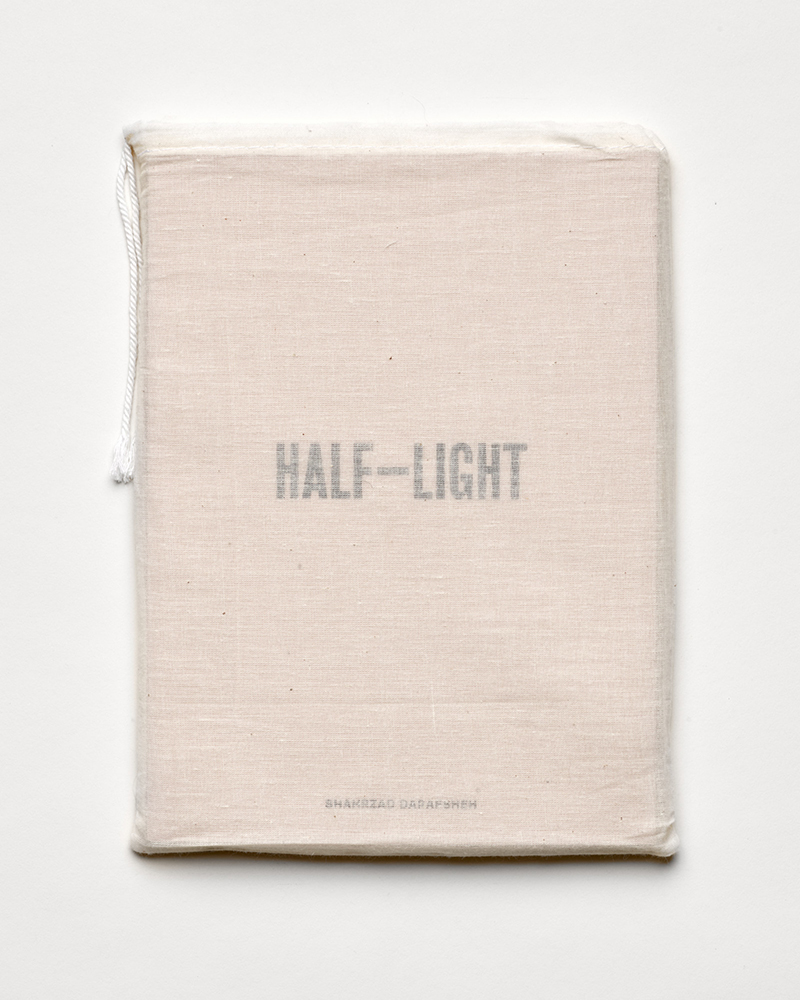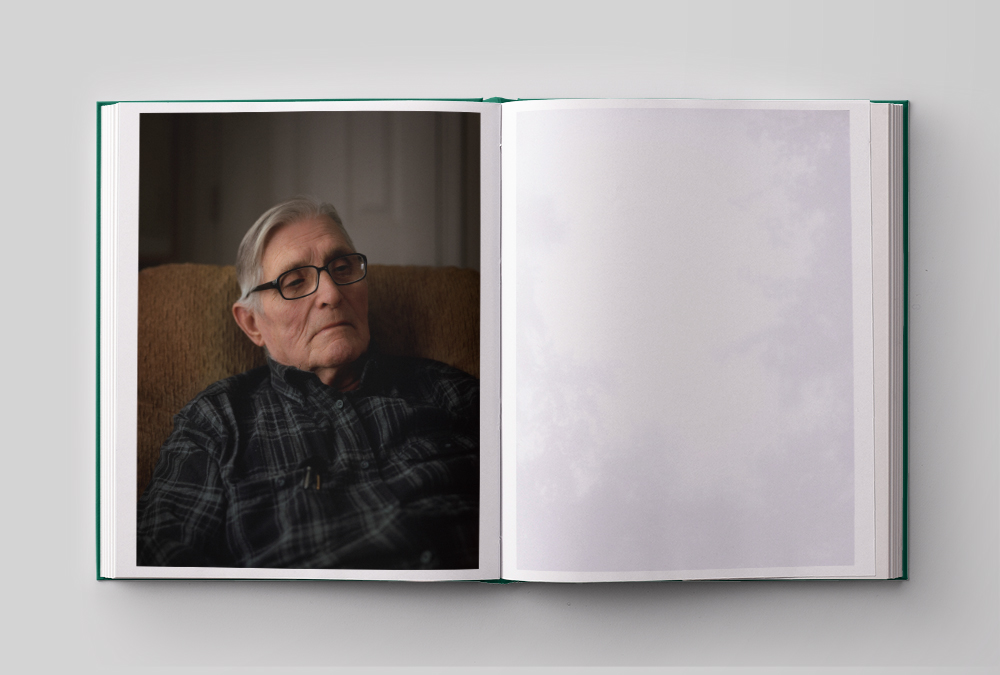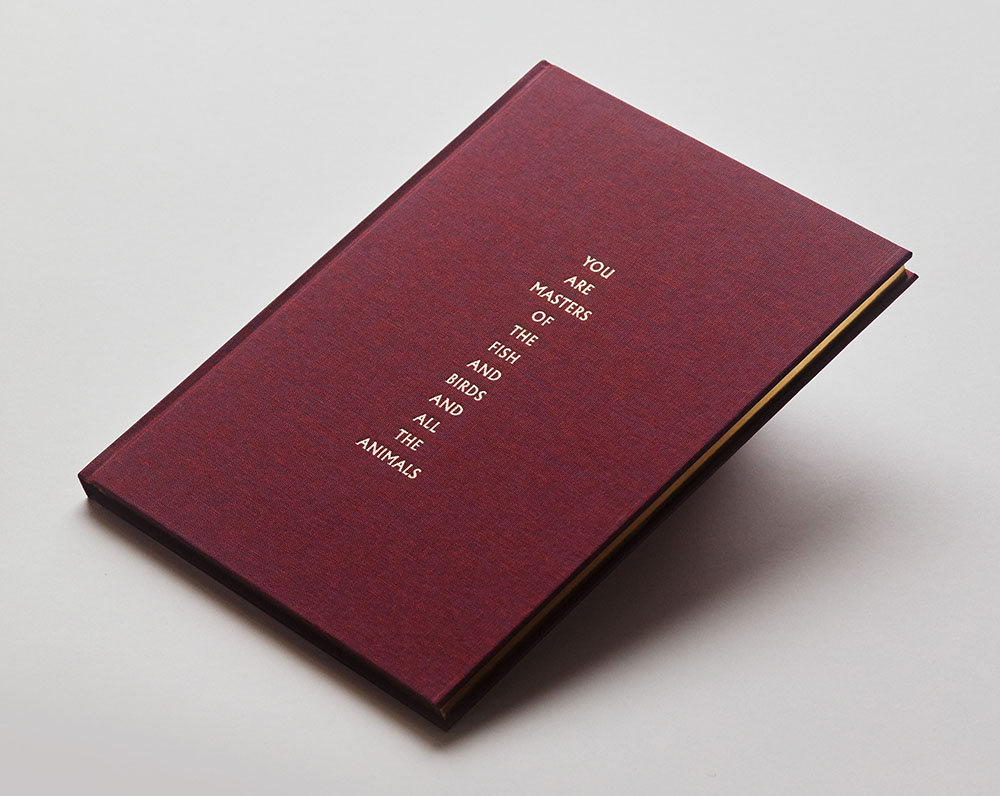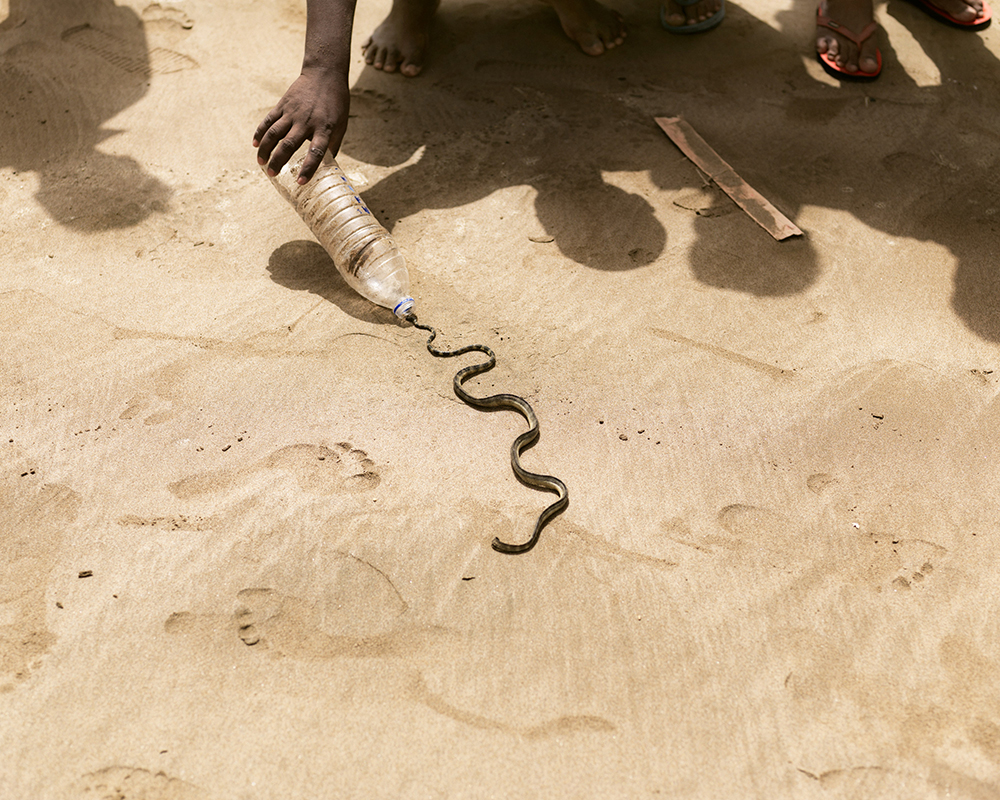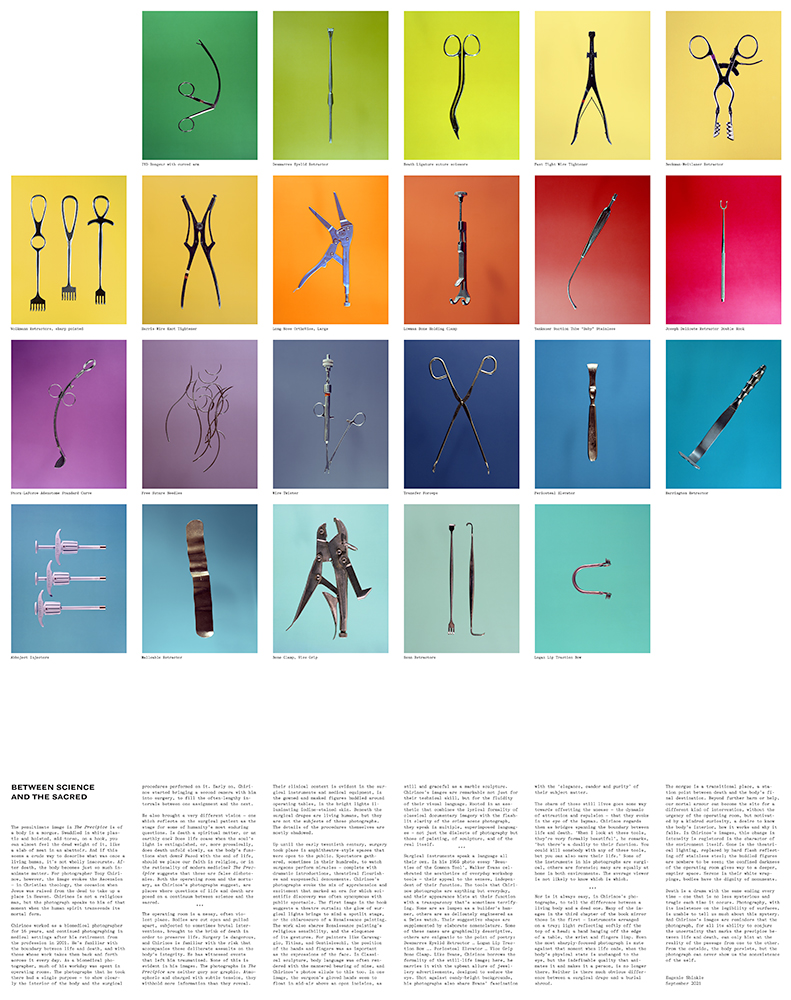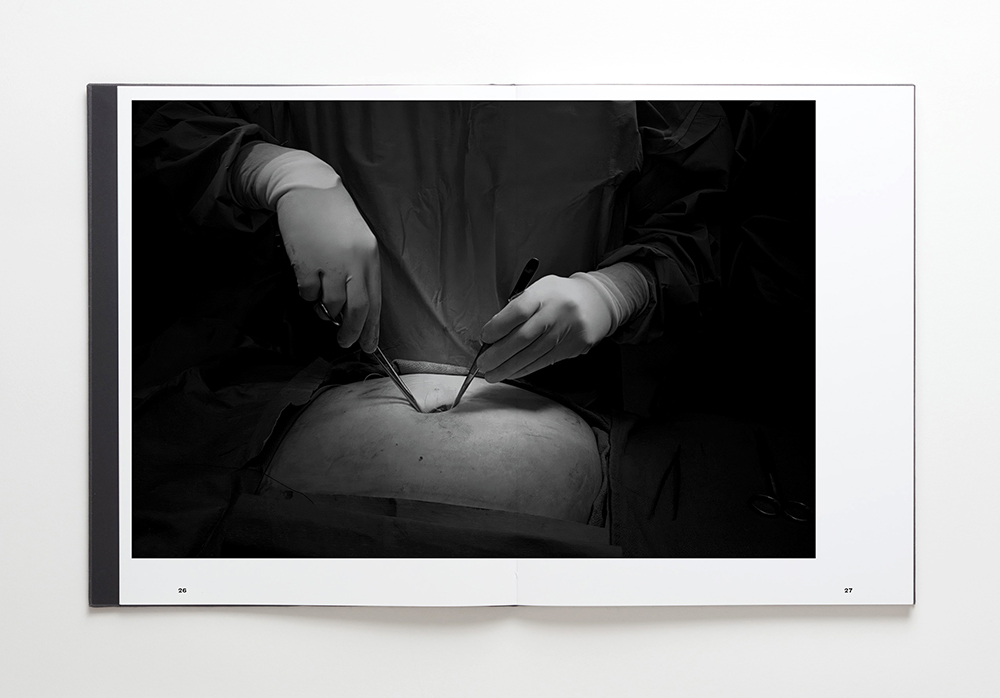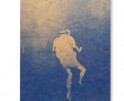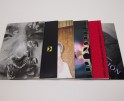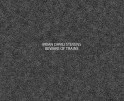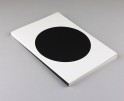Publisher’s Spotlight: Gnomic Book
This month is all about books on Lenscratch. In order to understand the contemporary photo book landscape, we are interviewing and celebrating significant photography book publishers, large and small, who are elevating photographs on the page through design and unique presentation. We are so grateful for the time and energies these publishers have extended to share their perspectives, missions, and most importantly, their books.
Gnomic Book is an independent fine art imprint founded by Jason Koxvold in 2016 and based in Portland, OR. With a focus on developing challenging projects by emerging artists in small, high-quality editions, they explore the notion of book as object.
I recently discovered Gnomic through a series of personal suggestions. One after another friends and strangers alike would tell me to check them out, insisting I would love their books. I did as told and they were all right. I do love their books. They feature a superb line-up of lens based artists whose work is impactful and well presented. Design is important to me and with Gnomic, the form meets function in a way that is both pleasing and purposeful, weaving together aesthetics and meaning in a perfect mix of salience and subtlety. I was eager to peel back the curtain and learn more about how the magic happens. – Tracy L. Chandler
Today photographer Tracy L. Chandler interviews publisher Jason Koxvold.
Follow Gnomic Book on Instagram: @gnomicbook
What was the first book you published, and what did you learn from that experience?
The first Gnomic Book was my own project, Knives. I was fortunate enough to find Jos Morree, who works as a consultant on art books and has a lifetime of experience making books in Holland, which has such a deep history of design and print; he was instrumental in making our first books great, sharing his knowledge of binding technologies and the physicality of books, which is so often overlooked by American publishers.
What is your mission as a publisher?
I would say our mission is to make beautiful books that are subversive and thoughtful, whose form is appropriate to their content. We’re increasingly interested in making work with and for a globally diverse audience — as opposed to what we think of in America as diversity, which exists in a very narrow, US-centric cultural space.
How big is your organization?
Gnomic Book is myself and Shane Rocheleau, and we collaborate intensely on every project. Between us we do everything, with logistical support from our warehouse in the Netherlands.
Are there any publishing projects that have been particularly meaningful to you?
I think our books with women have been the most meaningful to me, for whatever reason. Half—Light, with Shahrzad Darafsheh, was an incredible learning experience; she lives in Tehran, and was battling cancer at the time. I feel privileged to have had a glimpse into her world. The book is nearly sold out and is still one of the most popular books when we do a fair: the tactility of it, multiple layers of translucency that evoke the fragility of human skin, is in perfect sync with her photographs. And Abendlied, by Birthe Piontek, was one of those projects that was not difficult to make, but once I held the finished result in my hand, my emotional response to it caught me by surprise.
I have other favourites of course — each of the books takes on its own life once it’s complete — but in terms of emotional resonance, those two are up there. I should perhaps also mention Primal Sight, which we made with Efrem Zelony-Mindell, which was a remarkable, inclusive project to work on and really exemplified a commitment to craft on the parts of everyone who touched it. I rather foolishly insisted on printing white ink on black paper, which is not really something that’s done; it took a lot of testing and heavily leaning on Marc Gijzen’s encyclopaedic knowledge of lithography, but the end result was spectacular.
What upcoming projects are you excited about?
We have a new project with Shane called Lakeside that is slated for release in early 2022; it’s a continuation of some of the themes of white supremacy, cultural hegemony and mythology which he explored in You are Masters of the Fish and Birds and all the Animals (YAMOTFABAATA). It’s incredibly ambitious in every regard, and includes collaborative extensions that live in the printed book and in the digital space.
Also a new book with Dawit N.M. that’s an incredibly beautiful accounting of his family life between Ethiopia and the United States. We’re in the process of designing it at the moment.
How many books do you publish a year, and how do you choose which projects to publish? Do you have a specific focus?
We are doing about five a year at the moment, which honestly feels like too much, given how much work it usually takes to make each one. Shane and I meet periodically to look at submissions or work that we’re excited about. I’m finding we have to be more rigorous about selections now, rather than just following my gut, because it’s so easy to become overwhelmed by the workflow and end up doing a disservice to artists we’ve already committed to working with.
How can an artist get their work in front of you? Do you have any advice for photographers?
We do look at submissions, but very rarely do we have time to get back to people if we’re not interested in the project. Often we’re interested but can’t commit. We receive some incredibly presumptuous, occasionally rude, emails from people. I actually don’t mind a slightly generic email, although if an artist has done their homework it doesn’t hurt. Just don’t be rude.
What is the typical timeline of a project, from the beginning to the finished product?
That depends on the length of the piece of string; a lot of factors come into play. Usually it’s about 6-12 months from our first formal conversations to holding the books in your hand.
Your books tend to have a strong design component. Can you talk about your design philosophy and process for choosing materials? Do you work with outside designers?
I design all the books myself; the aim is always to create a piece that is conceptually whole, by making design decisions and material choices that work together to make something that strengthens the book, in ways that are perceptible and imperceptible. Abendlied , for example, evokes a German schoolbook of a certain era. The colours of the fabric reflect the colours in some of the photographs, taking the reader deeper inside Birthe’s childhood home. Sometimes we want the book to smell a specific way, and that affects whether we choose conventional offset print or H-UV / LED UV. Sometimes the book should be heavy, sometimes light, so that will determine the paper we select. One of our new projects is printed in CMYKK, which opens up greater dynamic range, or a broader colour gamut, in the images. Each project has different needs, and I find that once an idea crystallises, the rest of the process – figuring out the specifics of the design and specification – all comes into play to elevate that idea quite easily, and very collaboratively with the craftspeople who will make the book. That’s honestly one of my favourite parts of the process; spending time with people who have been doing this for generations, and finding new ways to use their technologies, whether they be ancient or cutting-edge, in service of the idea. Opening myself up to the expertise of others is especially rewarding.
How collaborative is the design process with the artist?
The conceptual stage is collaborative; the design process tends to be less so. If the artist has made a PDF of their work for the purposes of a submission, not much of that survives to the finished book. Typically Shane will sequence a project and I’ll give some input, and from there we talk with the artist about that sequence and some design and material thought starters. For books that are more traditional in their form, sequencing can exist as its own process, but when the book is less conventional – for example LIKE, by Ryan Debolski – the design and the sequence are harder to separate.
How is the financial side of the project structured between publisher and artist? Does the artist contribute to production cost?
The artist pays the full production cost, plus a small percentage that begins to scratch the surface of covering the hundreds of hours that we put into the project, and all the different equipment, software, and services that are required to make and ship books. When the work is complete, we give the artists an agreed-upon quantity of books and a percentage of the sales.
What support do you give artists in terms of marketing or distribution? Do you attend book fairs?
Being a part of the Gnomic family has some advantages, in terms of getting the work into the right hands. For example, the MoMA Library recently purchased our entire back catalogue, and committed to collecting all of our forthcoming titles for the foreseeable future. We do a lot of PR outreach for our artists with writers and publications with whom we’ve built relationships; we run paid advertising from time to time when it’s appropriate. In terms of book fairs, we’ve historically attended the NYABF, LAABF and Polycopies in Paris; of course, the changing situation with COVID has made all of that difficult to plan for. We encourage our artists to sell their copies directly in places where they’re not competing with us – for example, at a book fair they might be attending privately, or in local stores that we don’t have connections with.
Lastly, can you talk about Virtual Assembly? How did it come about and where do you see it going in the future?
I was excited for us to attend Paris Photo New York in the spring of 2020, and when it was cancelled due to the pandemic, a lot of independent publishers started looking for ways to connect digitally. We decided, rather rashly, to try to reinvent the book fair in the online space in just a couple of months. Despite some initial technology issues I think it was a great success, and I feel like it was as good as anything else we’ve participated in online since then, despite being held together with duct tape. Personally, it was hugely meaningful, during a time when the whole world was locked down; Stanley Wolukau-Wanambwa brought together a wonderful cast of participants and we all just… made it work. Sohrab Hura used his phone as a wifi router from his rooftop in India. Max Pinckers and Eli Durst had a tremendously entertaining discussion between Belgium and the US. I loved Leslie Wilson’s discussion with Gideon Mendel.
We’ve since streamlined the production a little and continue to produce discussions on an ongoing basis, once a month or so. It’s a more manageable format that doesn’t require the sobering capital investment that we put into the first event, in a way that supports our colleagues in the publishing space and keeps viewers coming back.
Tracy L Chandler is a photographic artist based in Los Angeles, CA. Her work explores peripheral communities and her own personal story reflected through portraiture and narrative. Her photographs address themes of memory, belonging, seeing, and being seen. Tracy earned her MFA in Photography at the Hartford Art School in 2021 where she was awarded the Mary Frey Book Grant. Her work has been exhibited in galleries and institutions in the United States and abroad.
Follow Tracy on Instagram: @tracylchandler
Posts on Lenscratch may not be reproduced without the permission of the Lenscratch staff and the photographer.
Recommended
-
Publisher’s Spotlight: Smog PressJanuary 3rd, 2024
-
Publisher’s Spotlight: Kult BooksNovember 10th, 2023
-
Publisher’s Spotlight: ‘cademy BooksJune 25th, 2023
-
Publisher’s Spotlight: Brown Owl PressDecember 10th, 2022
-
Publisher’s Spotlight: DOOKSSeptember 26th, 2022

